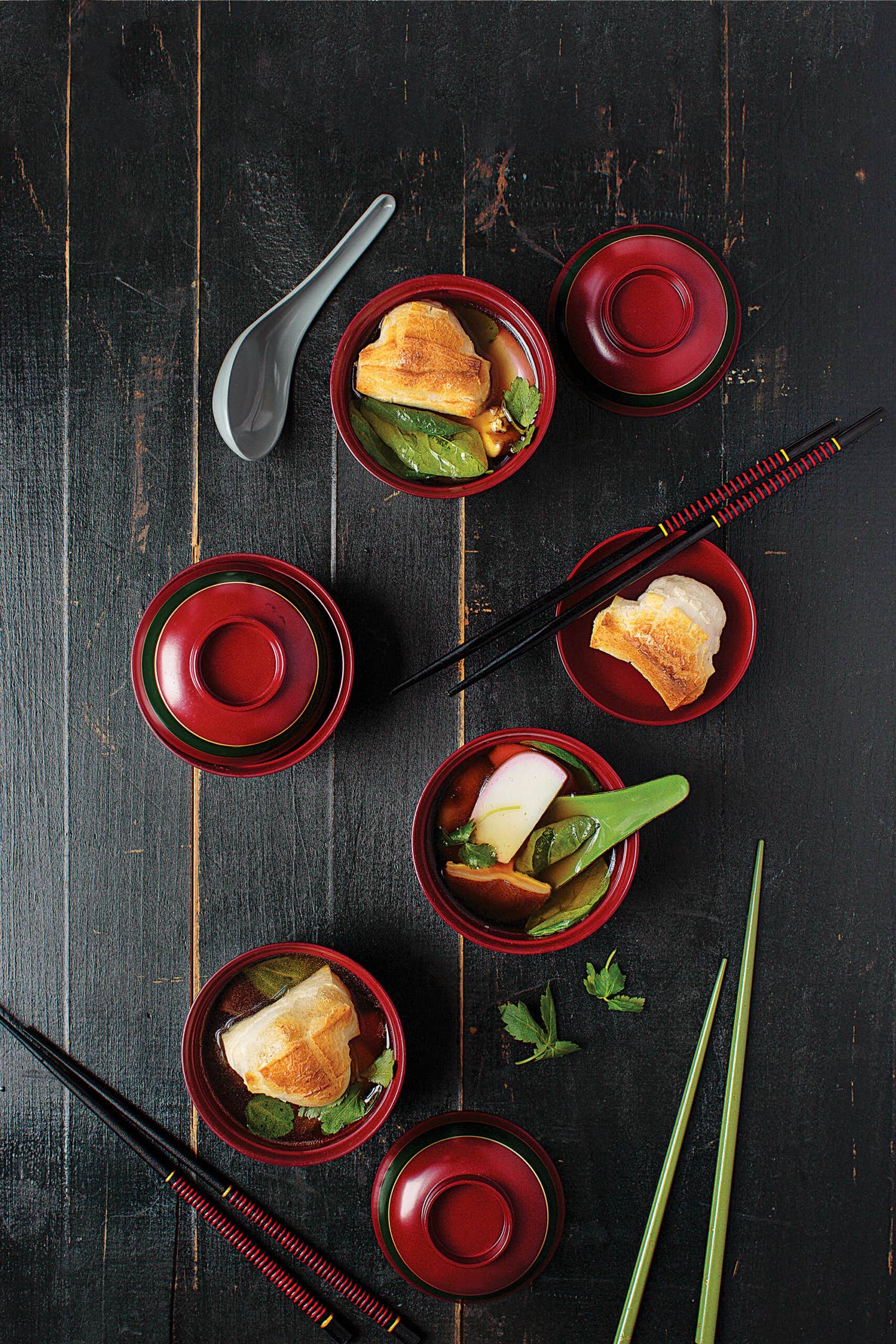
Mochitsuki: Japan’s Nostalgic New Year’s Tradition
The sound of the mallet pounding
recalls the end of the year
in my yearned-for home town.
—Keiho Yamanaka, 1940
For Japanese immigrants, few things other than cherry blossoms are more nostalgic than the sights, smells, and sounds of mochi, sweet glutinous rice cakes, being steamed and then pounded in an annual New Year's ritual known as mochitsuki. Shaped into smooth white orbs, the cakes are one of the principal components of the beloved New Year's soup ozoni.
As a six-year-old Japanese-American transplanted from California to the Japanese beach town of Zushi, I witnessed my first mochitsuki with a mixture of awe and fear. Young men in hachimaki headbands took turns with a wooden mallet, or kine, pounding on a sticky mass of rice placed in a granite mortar, or usu. Crouched next to the mallet-wielder, a woman with a white kerchief covering her head deftly slipped a hand into the mortar between each blow to turn the mochi. It was transportingly suspenseful theater, since one tiny slip in the rhythm of the pounding and turning would have resulted in a mangled hand.
The performance culminated blissfully, though, when the finished cakes appeared floating in a rich dashi stock, along with colorful pink-rimmed slices of kamaboko (fish cake), daikon, carrot, and shiitake mushrooms.
In Japanese-American communities across America today, mochitsuki are still held, bringing together entire church congregations or communities, though more often than not, Japanese-made electric mochi makers do the work of steaming and pounding, and volunteers shape plain cakes and fill others with sweet an, or azuki bean paste. At the Livingston United Methodist Church in Livingston, California, however, one community still hews to the old ways, steaming 500 pounds of rice in handmade, stacked wooden frames over oil-drum fires. The steamed rice is put through meat grinders to speed its transformation into mochi and is then finished with a mallet (handmade from local black walnut, olive, or pine trees) and mortar.
The ritual ozoni, eaten on New Year's morning, comes in many regional styles. In my grandmother's hometown in Chiba Prefecture, a dashi (made with dried bonito and kelp) or chicken stock broth was favored. For the three days following New Year's that it was eaten, my great-grandmother changed up the soup: with miso one day, Napa cabbage another, sometimes shungiku (chrysanthemum leaves) and almost always satoimo (taro) and morsels of chicken or pork.
Though ozoni is said to bring good luck in the coming year, for me, the medium is the message: I feel instantly lucky to have this steaming, nostalgia-laden bowl in front of me, to be devoured in the company of family and friends.
Keep Reading
Continue to Next Story










